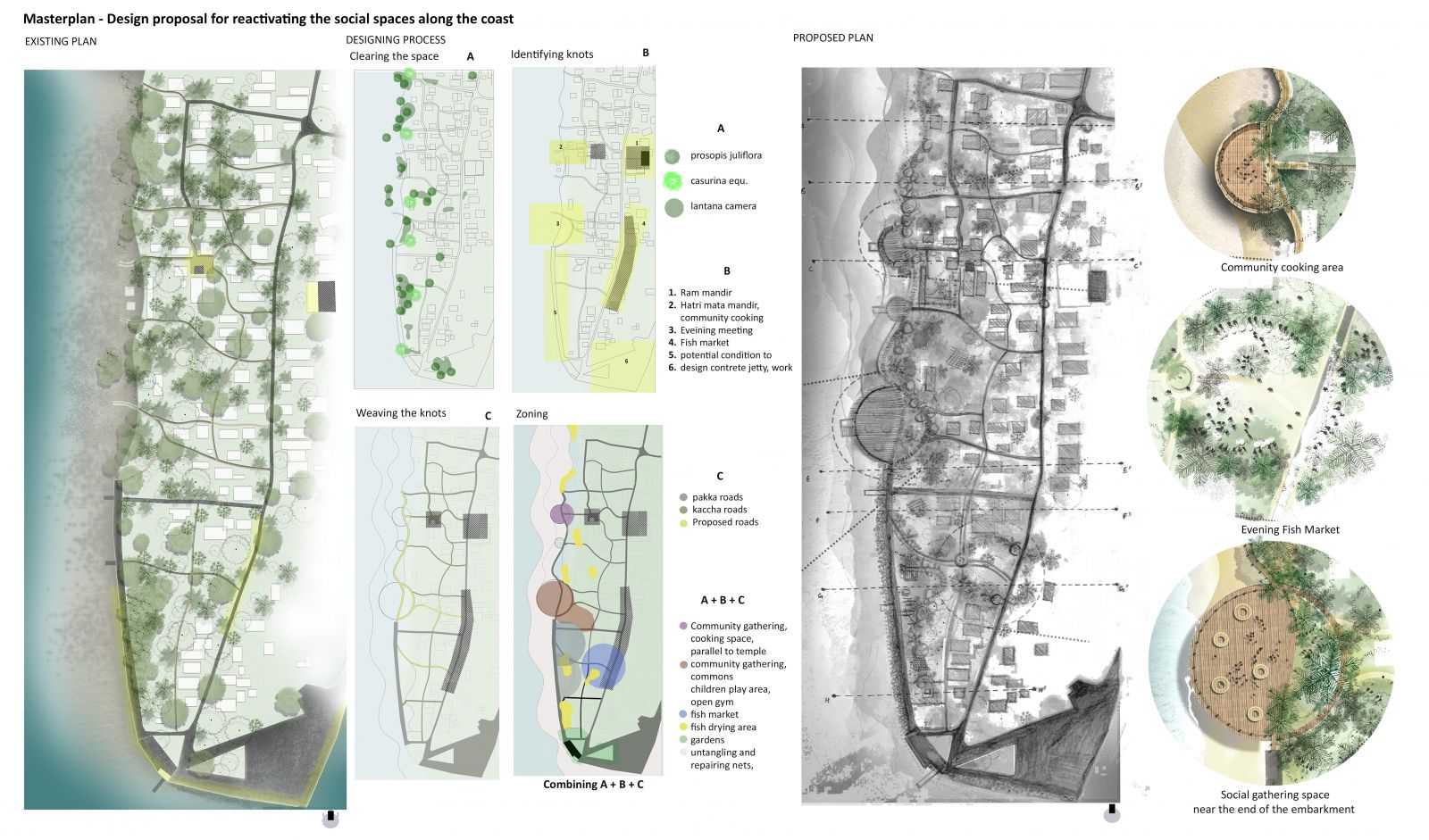Your browser is out-of-date!
For a richer surfing experience on our website, please update your browser. Update my browser now!
For a richer surfing experience on our website, please update your browser. Update my browser now!
The project starts by tracing the replacement of native flora species with invasive species. Invasive species are replacing native species with the native dynamic ecosystem of the coastal dunes is lost and the native ecosystem of mangroves is modifying. Similarly, globalization and urbanization induce changes have brought in shifts and modifications in the lives of people of this land-water transect. This is most evident in the replacement of values, things, and places of fishermen community of the coastal village, Zai. One such aspect is the loss of meanings attached to small social spaces along the coast. The coastal erosion, shift in occupations, and new build infrastructure such as embankments and coastal roads have enhanced this shift.
The project tends to acknowledge and re-activate the social spaces along the coast. Social spaces (knots) are identified by overlapping and comparing daily activities, mobility, common areas, and associated meanings of the fisherman's community now and then.
The project tries to weave lost associations using collective memories using spacial inserts.
The program carefully knots together the memories and their associated elements from culture and landscape to the existing coastal edge in a sensitive manner. It explores the native edge of sand dunes, beaches, and settlements as a series of small spacial inserts. These inserts range from a place for a community gathering near the existing community kitchen to small play structures inspired by fish drawing and net structures to a more natural edge to the sand dunes. It also re-shifts and places the fish market in its previous informal organization and character.









